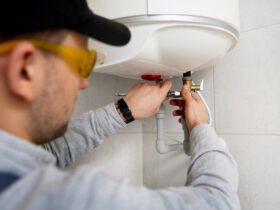Have you ever stepped into your home and wondered if that slight tilt in the floor was always there? Do tiny cracks in the walls keep catching your eye, and you’re unsure whether they’re harmless or hinting at a deeper issue? These could be early signs that your home’s foundation isn’t as solid as it should be. Whether you’re in the heart of the city or the quiet suburbs, homes across Melbourne are not immune to shifting soil and structural stress. That’s why understanding the warning signs of foundation trouble is so important.
In this post, we’ll explore the top seven signs that may indicate your home needs foundation repair in Melbourne. From cracking walls to sagging floors, we’ll break down each symptom in simple terms and explain why it matters. Knowing when to act can save you from costly repairs and help keep your home safe, secure, and structurally sound.
Sign #1 – Cracks in Walls and Ceilings
Cracks in walls and ceilings are often the first thing people spot when foundation issues arise. At times, these cracks are purely cosmetic and develop due to normal settling. However, certain patterns or deep splits can be a warning that your home’s foundation has started shifting. If you notice diagonal cracks that widen over time or if you can easily fit a coin into them, you might be looking at a serious issue.
When Does a Crack Indicate a Serious Foundation Problem?
Some cracks form because of temperature changes or minor settling, which are usually no big deal. But if you see long, jagged cracks that zigzag down your wall, it’s a potential sign of major stress. Also, keep an eye out for cracks near door frames or windows that seem to grow quickly. Those might point to structural instability. Monitor all new cracks for changes in width and length, and don’t hesitate to call a structural expert if you’re unsure.
Should You Worry About Cracks in Your Basement?
“Basement foundation problems” and “signs of foundation issues in basement” are common search terms for a reason. Basements can develop cracks from water pressure or soil movement. Hairline cracks often appear naturally, but larger ones, especially those that let water in, signal bigger trouble. If your basement crack remains damp or has a mineral build-up (often known as efflorescence), extra moisture might be damaging your foundation. Address it as soon as possible to avoid further problems, especially in areas prone to heavy rainfall.
Sign #2 – Sagging or Uneven Floors
Have you ever wondered, “Are sagging floors dangerous?” or “Can sagging floors collapse?” These questions pop up a lot among homeowners who feel a slight bounce or slant underfoot. Uneven floors can look harmless at first, but they can be a key indicator that your home’s foundation is struggling. Much like the walls, the floors rely on a stable base to stay level. Once that base shifts, you end up with that uneven sensation and, in more serious cases, a safety hazard.
What Causes Floor Sagging?
Floor sagging can stem from a few culprits, including rotted joists, shifting soil, or poor support beams. In older Australian homes, humidity might weaken timber joists over time. When the underlying support isn’t steady, the floor eventually dips. Sometimes, it’s a straightforward fix, like adding extra support. Other times, the sagging points to broader foundation problems that need immediate attention.
Are Sagging Floors Dangerous?
In many cases, a slight slant isn’t life-threatening. However, it can still cause trips, furniture imbalance, and that unmistakable feeling that something just isn’t quite right. Over time, mild sagging might worsen. If the root cause is foundation-related, the problem won’t simply go away—it will likely become bigger and more expensive to fix as time goes on.
Sign #3 – Sticking or Misaligned Doors and Windows
Doors and windows that suddenly jam or refuse to close properly could be telling you there’s movement in your foundation. Sometimes, a door or window might stick due to changing seasons—timber frames can expand in humid conditions. But it might be time to investigate your foundation if you’ve ruled out simple weather changes and are still wrestling with a stubborn door.
How to Check for Door and Window Alignment
One easy test is to open and shut your doors and windows at different times of day. If the fit is consistently poor, then misalignment might be caused by structural shifts. You can also take note of any visible gaps around the frame. With windows, glance at the window frame from an angle. Does it look noticeably off-kilter? If so, your foundation could be playing a part.
Sign #4 – Gaps Around Frames and Exterior Doors
On top of that misalignment, watch out for noticeable gaps around doors or window frames. These gaps can show up on the inside or outside of your home, and they’re a clear signal that something in your structure is shifting. While some tiny spaces may be chalked up to expanding materials, large or growing gaps might suggest your foundation is looking a bit worse for wear.
Recognising Gaps and Spaces That Indicate Shifting Foundations
Check regularly for any gap that seems to increase over time. Pay attention to door thresholds, the corners of your window sills, or the edges where your exterior doors meet the walls. If you can see sunlight streaming through a gap in a closed door, that’s a warning sign. A quick measurement or even a photo log can help track how fast or how dramatically the gap is growing.
Sign #5 – Basement Foundation Problems
When you hear the phrase “basement foundation problems,” it may conjure images of flooding and damp walls. Basements are susceptible to moisture issues, especially in regions that see a fair bit of rainfall. In Australia, many homes either have a partial basement or a raised structure with a crawl space, both of which can show signs of trouble if the foundation is compromised.
Signs of Foundation Issues in the Basement
Keep an eye out for water stains, cracks, or consistent damp spots that never seem to dry. You might also notice tilting support posts or spalling concrete, where the surface begins to flake off. Another giveaway is a strong, musty smell that lingers despite ventilation. These are all signals that the soil around your basement is putting extra stress on your foundation.
Sign #6 – Water Pooling Around the Home
Have you ever stepped outside after a drizzle and noticed little ponds forming around your home’s perimeter? That pooling water is not just an eyesore—it could also be a major contributor to foundation troubles down the track. Good drainage is essential for keeping the soil stable, and when water sits in one spot, it can weaken the soil that supports your home.
Could Poor Drainage Cause Foundation Problems?
Absolutely. Water that collects near your house can penetrate the soil, causing it to shift, expand, or contract. Over time, constant wet-dry cycles lead to soil movement. This movement, in turn, puts more pressure on your foundation, increasing the risk of cracks and instability. Simple yard fixes, like adding better drainage pipes or regrading the soil, might save you from costly repair bills later on.
Sign #7 – Bowing or Leaning Walls
Bowing or leaning walls can feel like one of the more alarming signs of foundation stress. Sometimes, these walls visibly curve inwards, or you might notice that a formerly straight line now looks suspiciously angled. If your walls seem to have a mind of their own, it’s often a sign that external forces, like soil pressure, have taken their toll on your foundation.
What Causes Walls to Bow?
Soil pressure and moisture content are major culprits. Clay soils that expand when wet can push against the walls and force them inward. This pressure becomes harder for the foundation to resist if the walls are thin or already compromised by cracks. Construction methods also matter—if a home was built with weaker wall materials, it’s more prone to bowing over time.
What to Do If You Spot Any of These Signs
When you first see evidence of a foundation problem, it’s tempting to panic. But staying calm and gathering accurate information is usually the best start. Sometimes, the fix is simple, like improving drainage or sealing small cracks. Other times, you might need a more extensive repair that involves structural reinforcements or stabilisation methods to get everything back on track.
Understanding Foundation Repair Options
Foundation repair approaches range from underpinning to mud jacking, depending on the specific issue. Underpinning involves placing extra support beneath your foundation, while mud jacking pumps material under a slab to level it. Another method uses steel or carbon fibre reinforcements to stabilise bowing walls. Each approach targets different problems and suits different budgets. A professional inspection ensures you don’t invest in the wrong fix, saving you both money and hassle in the long run.
Conclusion
Recognising the early signs of foundation issues—like cracks, uneven floors, and sticking doors—can save you from major headaches down the track. Your home’s stability depends on a solid foundation, so it’s crucial to act quickly when something feels off. Professional foundation repair in Melbourne can address these problems efficiently before they escalate into costly structural damage.
Don’t ignore the warning signs; protecting your investment starts from the ground up. If you notice anything unusual, seek expert advice and ensure your home stays safe, secure, and standing strong for years to come. Your peace of mind is worth it.









Leave a Review